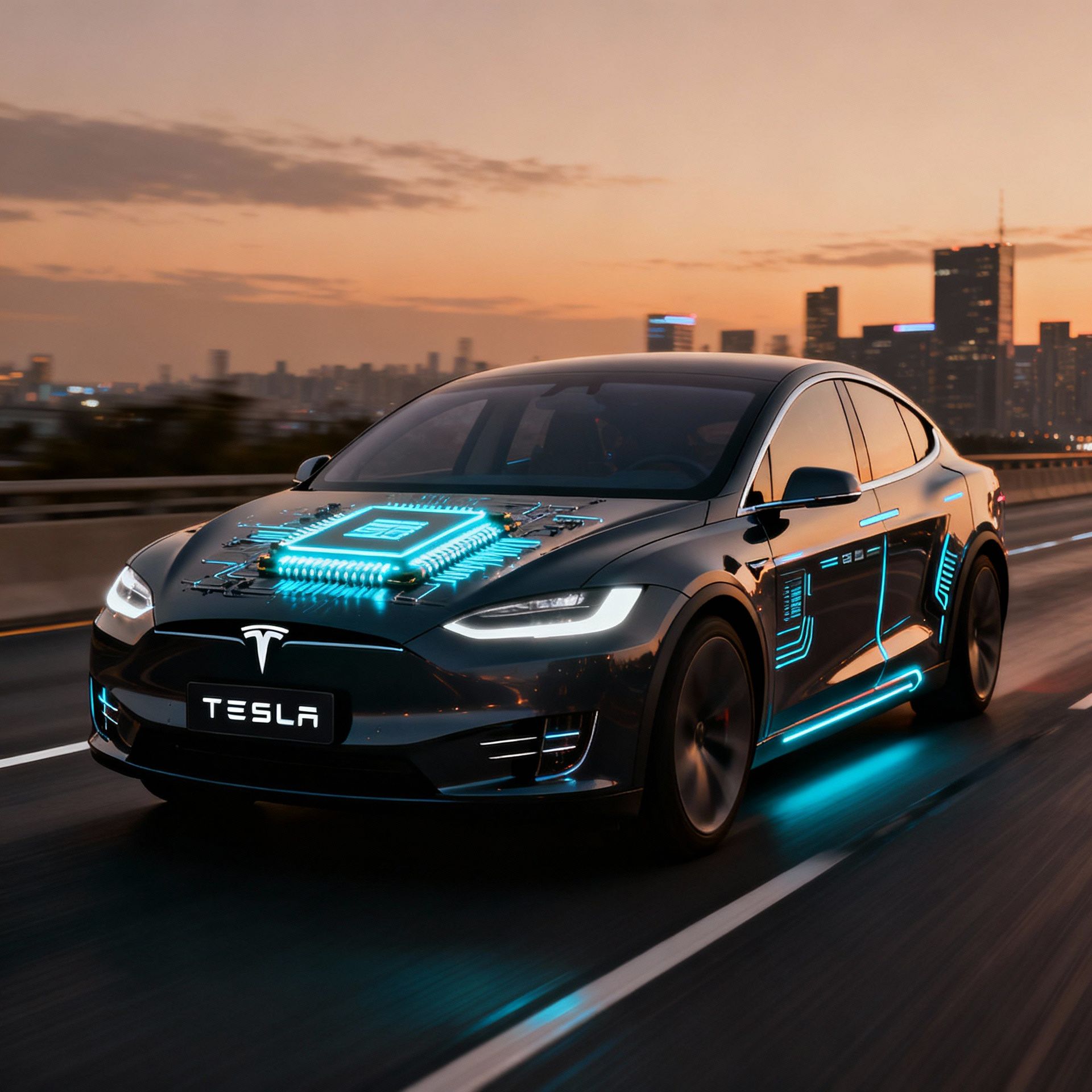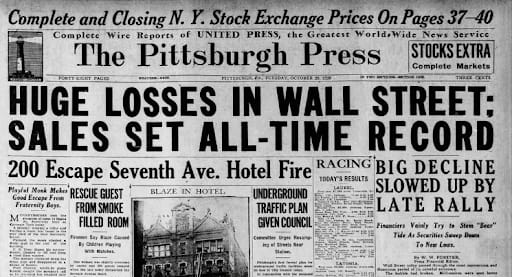- The Pragmatic Investor
- Posts
- Pragmatic Friday: 🔍 Tesla’s Future Just Got Clearer — Here’s My Take
Pragmatic Friday: 🔍 Tesla’s Future Just Got Clearer — Here’s My Take

🌞 Good Morning, Pragmatic Thinkers!
Every headline screamed like the world was ending again.
Inflation “surprised.” Rates “might not fall fast enough.” Tech “overextended.”
The usual noise cycle — the market panics, the algorithms amplify it, and everyone acts like this week’s volatility was some kind of revelation.
But here’s the uncomfortable truth: none of those stories were the real story.
What actually mattered didn’t trend.
What was structurally important barely made the front page.
And the market — as it often does — chased drama instead of direction.
Because while investors were doom-scrolling macro headlines, something far more consequential was taking shape beneath the surface: a shift in where value is actually being created over the next five years.
A shift away from the narratives the crowd loves… and toward the infrastructure, intelligence, and systems that will define the next decade of compounding.
That’s what we’re here to talk about today.
Not the noise.
Not the fear.
Not the five-minute narratives.
But the signal everyone else missed — and how it ties directly into the company that half the market loves to hate and the other half keeps misunderstanding.
In this week’s Pragmatic Playbook, we cut through everything the market got wrong… and look straight at the one story that actually moved the long-term chessboard:
👉 Tesla — and what its next chapter really means for investors willing to peel back the hype and see the deeper game.
🔥 Market Pulse
The chip superstar Nvidia crushed expectations with its Q3 results, sending a strong signal that the AI infrastructure boom is real rather than just hype. Analysts are watching closely because Nvidia often acts as a bellwether for the broader AI-market. If this is one of the last “safe” bets in the AI trade, investors may be getting ahead of a bigger structural shift.
For retirees (and anyone prioritising capital preservation), the case for high-yield savings is compelling: FDIC-insured safety, better interest vs typical checking accounts, and liquidity as uncertainties mount. With inflation still biting and bond yields behaving erratically, parking some dry powder in safe but higher-yielding cash is becoming less of a “boring” move and more of a strategic one. That doesn’t mean all cash—and it doesn’t mean ignoring equities—but it means recognising changing risk dynamics.
The long-standing “no-hire, no-fire” mantra in U.S. labour markets is fraying: job‐cut announcements are rising while hiring is sputtering. That suggests a harder landing risk for employment and could force central bankers or investors to rethink how tight things really are. For you as an investor, this raises a red flag for discretionary sectors, high-multiple growth names and anything predicated on strong consumer footing.
TOGETHER WITH OUR PARTNER
Find your customers on Roku this Black Friday
As with any digital ad campaign, the important thing is to reach streaming audiences who will convert. To that end, Roku’s self-service Ads Manager stands ready with powerful segmentation and targeting options. After all, you know your customers, and we know our streaming audience.
Worried it’s too late to spin up new Black Friday creative? With Roku Ads Manager, you can easily import and augment existing creative assets from your social channels. We also have AI-assisted upscaling, so every ad is primed for CTV.
Once you’ve done this, then you can easily set up A/B tests to flight different creative variants and Black Friday offers. If you’re a Shopify brand, you can even run shoppable ads directly on-screen so viewers can purchase with just a click of their Roku remote.
Bonus: we’re gifting you $5K in ad credits when you spend your first $5K on Roku Ads Manager. Just sign up and use code GET5K. Terms apply.
🎯 The Pragmatic Playbook: Tesla’s Next Big Shift Isn’t EVs — It’s Compute

AI Generated Image
Tesla still gets talked about like it’s “the EV company,” as if we’re stuck in 2019 watching Model 3 delivery videos on YouTube.
But if you strip away the noise, ignore the stock-price drama, and look at the signals that actually matter, something far more interesting is happening under the surface.
The real story isn’t about EV demand, margins, or China competition. Those matter, but they’re not the driver anymore.
The real story is that Tesla is slowly — almost quietly — transforming from a car manufacturer into a compute company that just happens to ship hardware on wheels.
And the market hasn’t priced this in yet.
Which is exactly why I’m paying attention.
Today’s Playbook is about that shift: the next-generation Tesla chips (AI5 and AI6), the two catalysts they unlock, and what it all actually means if you’re an investor who cares about the next three years instead of the next three weeks.
So let’s get to it — raw, clear, and straight to the point.
🧠 Tesla’s New Identity Starts With Silicon
Most investors talk about Tesla through the lens of EVs: deliveries, margins, price cuts, China, competition. All of that matters, but here’s the truth:
The bottleneck isn’t EV production.
It’s compute.
Autonomy, robotics, manufacturing automation, ride-hailing, Optimus, AI-driven energy systems — every single one of these depends on Tesla controlling the hardware and software stack.
That’s where AI5 and AI6 come in.
These aren’t incremental upgrades. They’re quantum leaps.
AI5 is believed to be more than 40× more powerful than Tesla’s current generation, and AI6 is reportedly targeting 2× beyond that.
That’s not Tesla catching up to competitors — that’s Tesla trying to own the entire vertical.
Why this matters:
When you control your own chips, you don’t wait for NVIDIA.
You design neural networks around your hardware, not the other way around.
You lower cost-per-unit of intelligence — crucial for autonomy.
You free yourself from supply-chain drama.
You move closer to becoming the Apple of mobility: full-stack control, no middlemen.
This is the foundation.
Everything else — robotaxi, mass market EVs, Optimus — only scales if Tesla owns the compute layer powering it all.
🚖 Catalyst #1: The Robotaxi Flywheel
Here’s where the chip story becomes the business story.
Tesla’s robotaxi vision doesn’t work without compute superiority.
And with AI5/AI6, Tesla is building exactly that advantage.
The robotaxi market is massive — and wildly misunderstood.
People think it’s about cars without drivers.
It’s not.
It’s about a platform that:
generates SaaS-like recurring revenue
scales globally without needing more staff
turns each vehicle into a cash-flow asset
makes traditional car margins look like pocket change
A robotaxi-enabled Tesla could generate 10× the lifetime revenue of a standard vehicle.
Think about that:
If Tesla succeeds, the value of each car doesn’t end at the sale — it begins at the sale.
Most investors aren’t ready for that shift.
They’re too busy arguing over delivery numbers.
Meanwhile, Tesla is quietly building the infrastructure for the mobility platform of the next decade — and the compute engine (AI5/AI6) is the prerequisite for all of it.
Robotaxi is not “the story.”
Robotaxi is the business model waiting behind the hardware.
🚗 Catalyst #2: The Mass-Market Tesla (and Everything That Comes After)
The second catalyst isn’t a single product — it’s a strategic shift.
Tesla has been teasing a lower-cost EV for years. Some call it vaporware. Some think it’s impossible with margins already under pressure. Most just shrug and say, “We’ve heard this before.”
But here’s what they’re missing:
A mass-market vehicle only works if your cost-per-intelligence drops.
The compute layer is the most expensive part of autonomy. Reduce that, and the whole business model shifts.
AI5 → cheaper autonomy.
Cheaper autonomy → cheaper vehicles.
Cheaper vehicles → bigger TAM.
Bigger TAM → global dominance.
This isn’t about building the cheapest EV.
It’s about building the smartest affordable EV.
If Tesla cracks that — and the chip roadmap suggests they’re trying — then the next growth wave won’t come from luxury segments, but from global scale.
This is where the chips + catalysts blend into one narrative:
AI5/AI6 unlock robotaxi
robotaxi economics subsidize mass-market rollout
mass-market rollout fuels volume
volume reduces cost
reduced cost accelerates autonomy adoption
autonomy adoption drives platform revenue
That’s the flywheel.
And most investors have no idea it’s already spinning.
⚠️ The Hard Part: Timelines, Delays & Reality
Here’s the part I need to be brutally honest about:
This isn’t a 2025 story.
This isn’t even fully a 2026 story.
AI5 is expected around 2027.
AI6 pushes even further.
Robotaxi won’t scale overnight.
Regulators won’t say yes without friction.
Costs won’t drop in a straight line.
This is a patience trade — the kind most retail investors suck at.
But if you study asymmetric opportunities, you’ll notice something:
Unloved long-dated catalysts create the best risk-reward setups.
Why?
Because expectations fall…
the noise grows…
and the stock stagnates…
…right before the story turns.
We’ve seen this cycle with Amazon, Nvidia, Apple, Microsoft — and now Tesla is entering its own version.
But conviction requires clarity, and clarity requires ignoring the emotional noise around quarterly results.
This is the part where most investors blink.
🧭 My Take as an Investor

If I strip the narrative down to its skeleton, here’s what stands out:
Tesla’s future is not about EVs.
It’s about compute.
The company with the strongest autonomy engine wins the next decade of mobility, robotics, and intelligent machines.
That’s the race.
And Tesla is building the hardware, software, and data loops required to compete.
Will they execute?
History says yes — with pain along the way.
Will the timeline stretch?
Of course — it always does.
Will the payoff be linear?
Never.
But am I willing to bet that Tesla’s vertical integration plus custom silicon plus global fleet gives it an edge others can’t replicate?
Yes.
And that’s why this belongs in The Pragmatic Playbook — not because I expect next-month fireworks, but because I understand what happens when an industry shifts from metal to compute.
It’s not about cars anymore.
It’s about intelligence at scale.
🔍 What This All Really Means
Most investors overestimate what changes in a year.
But they underestimate what changes in five.
Tesla is in the uncomfortable middle — too early for Wall Street to care, too late for anyone paying attention to ignore.
The chips are the foundation.
The catalysts are the acceleration.
The business model is the transformation.
If Tesla pulls this off, the valuation argument everyone debates today becomes irrelevant.
The company will be graded on a different curve entirely — one closer to cloud, AI platforms, and infrastructure providers.
This is what the noise hides.
This is what the long game looks like.
This is why the current frustration often precedes the breakthrough.
And this is why stepping back matters — because when a company shifts identity, the stock always lags the story.
Until it doesn’t.
TOGETHER WITH OUR PARTNER
Crash Expert: “This Looks Like 1929” → 70,000 Hedging Here
Mark Spitznagel, who made $1B in a single day during the 2015 flash crash, warns markets are mimicking 1929. Yeah, just another oracle spouting gloom and doom, right?
Vanguard and Goldman Sachs forecast just 5% and 3% annual S&P returns respectively for the next decade (2024-2034).
Bonds? Not much better.
Enough warning signals—what’s something investors can actually do to diversify this week?
Almost no one knows this, but postwar and contemporary art appreciated 11.2% annually with near-zero correlation to equities from 1995–2024, according to Masterworks Data.
And sure… billionaires like Bezos and Gates can make headlines at auction, but what about the rest of us?
Masterworks makes it possible to invest in legendary artworks by Banksy, Basquiat, Picasso, and more – without spending millions.
23 exits. Net annualized returns like 17.6%, 17.8%, and 21.5%. $1.2 billion invested.
Shares in new offerings can sell quickly but…
*Past performance is not indicative of future returns. Important Reg A disclosures: masterworks.com/cd.
🧠 What did you think of today's newsletter? |
🧘The Friday Reset
When you zoom out far enough, the market stops looking like a battlefield and starts looking like a timeline.
And on that timeline, the biggest wins rarely belong to the loudest stories — they belong to the companies quietly laying rails while everyone else is arguing about stations.
Tesla is deep in its rail-laying phase. It’s uncomfortable, slow, and often boring. But that’s exactly when conviction is built — not when the charts go vertical, but when the story still feels uncertain.
If the next decade of mobility runs on intelligence instead of horsepower, then the real investment edge comes from recognizing who’s building the engine, not who’s selling the metal.
This week, that clarity mattered.
Stay Sharp,
— AK

Disclaimer: The content on this blog is for educational and informational purposes only and is not intended as financial, investment, tax, or legal advice. Investing in the stock market involves risks, including the loss of principal. The views expressed here are solely those of the author and do not represent any company or organization. Readers should conduct their own research and due diligence before making any financial decisions. The author and publisher are not responsible for any losses or damages resulting from the use of this information.



Reply